-
 Membership now open!1st XV,Bandits,Blackheath Women,Club News,Club XV,Community,Events,Girls,Juniors,Minis,Rugby News,Touch Rugby24 Jul 2024
Membership now open!1st XV,Bandits,Blackheath Women,Club News,Club XV,Community,Events,Girls,Juniors,Minis,Rugby News,Touch Rugby24 Jul 2024 -

-

-


NEW LAWS 2021-2022
1) 50:22 lineout throw-in
If the team in possession kicks the ball from inside their own half indirectly into touch inside their opponents’ 22, they will throw into the resultant lineout. The ball cannot be passed or carried back into the defensive half for the 50:22 to be played. The phase must originate inside the defensive half.
‘Indirectly’ means the ball must bounce before going into touch.
Why?
To encourage the defensive team to put more players in the backfield, thereby creating more attacking space and reducing defensive line speed.
Law wording – Law 18.8a:
A player, in their own half, kicks the ball indirectly into touch in the opposition’s 22.
Lineout is where the ball reaches the touchline
Who throws it in? – The kicking team
2) Goal line drop-out
If the ball is held up in in-goal, there is a knock-on from an attacking player in in-goal or an attacking kick is grounded by the defenders in their own in-goal, then play restarts with a goal line drop-out anywhere along the goal line.
Why?
To encourage variety in attacking play close to the goal line and to increase ball in play time by replacing a scrum with a kick that must be taken without delay. An opportunity for counter attack is also created.
Law wording
Law 12 (restart kicks section)
Play is restarted with a goal line drop-out when:
The ball is played or taken into in-goal by an attacking player and is held up by an opponent.
An attacking kick, other than a kick-off, restart kick following a score, drop goal or penalty attempt, is grounded, or made dead by the defending team in their own in-goal.
An attacking player knocks on in the opponents’ in-goal.
Law 21.16 -Ball held up in-goal
When a player carrying the ball is held up in the in-goal so that the player cannot ground or play the ball, the ball is dead. Play restarts with a goal line drop-out.
3) Flying wedge
To outlaw the three person pre-bound mini-scrum by redefining the flying wedge.
Why?
To reduce number of events where the ball carrier and multiple support players are in contact (latched) prior to contact, and to protect the tackler who can be faced with the combined force of three opposing players.
Law wordings
New definition of ‘latched’: Bound to a team-mate prior to contact
[Binding definition: Grasping another player’s body firmly between the shoulders and the hips with the whole arm in contact from hand to shoulder]
Amended definition of ‘flying wedge’:
An illegal type of attack, which usually happens near the goal line, either from a penalty or free-kick or in open play. Team-mates are latched on each side of the ball-carrier in a wedge formation before engaging the opposition. Often one or more of these team-mates is in front of the ball-carrier.
Law 9.22: Teams must not use the ‘flying wedge’.
4) 1-player pre-latched
The trial recognises the potential for 1-player pre-latching prior to contact. This will be deemed legal, but this player must observe all of the requirements for a first arriving player, particularly the need to stay on their feet.
Why?
To be more consistent in the management of the 1-person pre-latched player.
5) Cleanout and the safety of the jackler
To introduce a sanction for clean outs on the jackler (now defined) which target or drop weight onto the lower limbs.
Why?
To reduce injury risk to the player being cleaned out.
Law wordings
New definition of a ‘Jackler’: The jackler is the first arriving team-mate of the tackler at the tackle. They must remain on their feet to contest directly onto the ball. If previously involved in the tackle, they must first clearly release the ball carrier before contesting for the ball.
Law 9.20 – Dangerous play in a ruck or maul.
New section D) A player may lever the jackler out of the contest at the ruck but must not drop their weight onto them or target the lower limbs. Penalty kick
A copy of these Laws can be found in the information section on the iSport members area.
LATEST NEWS


